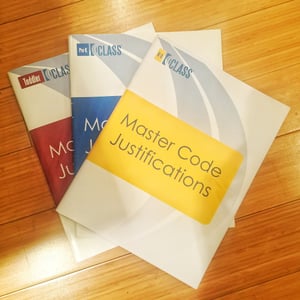
Today's post is the third in our "Tips for Enhancing Your Training Skills" blog series. In these posts, we will delve deeply into the fundamentals of essential training skills. This blog series, filled with tips from our training team’s collective years of experience delivering CLASS observation trainings to diverse audiences from around the country and the globe, will provide you with tangible ideas about how to be a more successful trainer.
At one of my trainings, a participant looked up and very loudly said, “Do the people who assigned the codes know anything about the CLASS?” I squelched my inclination to say, “Nah. We just went out on the sidewalk and asked people to come in and watch some videos for us” and instead, carefully explained the process Teachstone uses to determine the master codes
Because the CLASS is a highly inferential took, it’s not surprising that some people question the codes. The CLASS can be hard to learn and that is why your TTT trainer stressed the importance of having confidence in the master codes. After all, if CLASS trainers waffle on the accuracy of the codes, trainees are likely to question the accuracy of the codes as well.
There are a number of things you can do to help your participants feel confident in the master codes. The first is to explain the process. Take the time to review the slides on master coding in depth; explain that a team of CLASS experts who have undergone a rigorous onboarding process watch each video. They watch them independently and enter their codes into an online system to decrease the chances that another coder may inadvertently influence their codes. Then the coding team meets and discusses the video in great depth ~ discussing evidence and lack thereof for each indicator to ensure that the evidence supports the intent of the dimension. In sum, our master coders take this job seriously.
And speaking of master coders, it helps to say, “the master code is a 4” as opposed to “the master coders gave it a 4” or worse yet, “the master coder gave it a 4.” Stating the master code is a declarative sentence; it adds a bit of weight to the code. Saying the master coders gave it a score sounds a bit arbitrary. And if you talk about “the master coder,” people are surely going to flash to the Wizard of Oz - that funny little man behind the curtain pulling strings willy-nilly.
As you are discussing each video be sure to gather enough supporting evidence from your participants to support the code – or in cases of a low-range score, discuss what they did not see. The absence of indicators influences the code too. You do not need to go through each piece of evidence for each indicator, but you do need to ensure that participants are aware of really salient interactions. For example, if your group has over-coded Concept Development, talk them through their evidence indicator by indicator; help them see that some of their evidence is rote in nature and not supporting higher order thinking. Take them to the manual to read the range descriptions to determine the best fit and then go back to the table with the scoring guidelines. All of these things together provide you, the trainer; with the evidence you need to successfully support the code.
In our next post, one of our Affiliate Trainers will share some tips for “defending the master code.”

